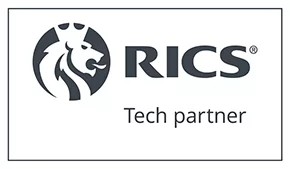In October 2025, the most effective types of capital for construction businesses are a mix of revolving working capital (overdrafts, invoice finance), asset-backed facilities (hire purchase/lease), and short term trade credit augmented by the British Business Bank’s Growth Guarantee Scheme—chosen by tolerance for personal guarantees, speed, and true all-in cost.
Expect typical pricing ranges of 8–15% APR for secured term loans, 12–24% APR for unsecured, 0.8–3.0%/m discount charges on invoice finance (plus service fee), 6–12% flat equivalent for asset finance (HP/lease), and 2–5% early-settlement discounts translating to effective annual rates above most loans if taken consistently. Region: UK (England). Base date: Q4 2025. VAT: Financial charges generally VAT-exempt; any quoted fees shown inc VAT where applicable. Units: %, %/month, days, GBP.
Need a quick sense-check of cash flow and materials drawdowns before you commit to finance? Request a Custom Estimate and we’ll mirror spend to programme so you can size facilities confidently.
- Cost Summary
- Assumptions and Methodology
- Capital Types Explained
- Detailed Cost Breakdown
- When to Use Each Capital Type
- Regional & Market Variation
- Inclusions and Exclusions
- Risks and Allowances
- FAQs
- Sources
- Key Facts & Assumptions (At a Glance)
Cost Summary (Q4 2025, inc VAT where applicable)
Indicative UK ranges assuming mainstream lenders/brokers and typical SME risk profiles (PGs common). Bank Rate is 4% (context for floating facilities). Use these to sanity-check offers and compare all-in costs:
- Overdraft (secured/unsecured): Bank Rate + 3–10% (typ. 10–16% APR equivalent), renewal fee 0.5–1.5% p.a.
- Term loan (secured): 8–15% APR; arrangement 1–3%.
- Term loan (unsecured): 12–24% APR; arrangement 2–5%.
- Invoice finance (confidential/factoring): Discount 0.8–3.0%/month on funds in use + service 0.2–3.0% of invoice; advances 80–90%.
- Asset finance (HP/finance lease): 6–12% flat equivalent (APR varies by term/deposit); doc fees £95–£295.
- Trade credit: 30–60 day terms; early-settlement discounts 2–5% (annualised cost/return can exceed loans).
- Credit cards/MCAs: Effective 20–40% APR+; use sparingly for micro-gaps only.
- Equity (angel/VC): No repayments; dilution + investor rights. Use for scaling products/services, not day-to-day cash flow.
- Guarantee support: British Business Bank Growth Guarantee Scheme via accredited lenders; borrower remains 100% liable.
Assumptions and Methodology
Approach: Ranges reflect UK construction SMEs (turnover <£10m), typical security (debenture/PGs), and mainstream offers in October 2025. Pricing combines base rate context, lender margins, and reported fee structures across bank and non-bank channels. VAT treatment: interest is exempt; some fees attract VAT and are shown inc VAT where relevant. We map cash needs to RICS NRM prelims and payment cycles under CIS and the VAT domestic reverse charge, and reflect late-payment risk in facility choice.
Which types of capital for construction businesses suit which jobs?
1) Overdrafts & revolving credit
Good for short, spiky cash gaps (materials, PAYE week). Usually repayable on demand; watch renewal fees and covenants.
2) Term loans (secured/unsecured)
Use for vans, yard upgrades, software rollouts, marketing pushes anything with multi-year payback. Match term to asset life.
3) Invoice finance (factoring & invoice discounting)
Funds tied up in certified applications/invoices are advanced (often 80–90%). You pay a service fee plus a discount charge on funds used. Strong fit where main contractors pay in 30–60+ days.
4) Asset finance (hire purchase & leasing)
Spread kit costs (excavators, MEWPs, vans) with fixed payments. HP ends in ownership; finance lease typically doesn’t, but can be extended or swapped.
5) Trade credit & supplier terms
Negotiate 30–60 days and use early-settlement discounts. Be realistic with ordering to avoid overtrading.
6) Equity & retained earnings
Use equity for growth or capability building (regions, design/PM team, off-site fabrication). Dividends optional; governance obligations stronger.
7) Government-backed guarantee support
Ask lenders about the Growth Guarantee Scheme if pricing/terms are tight borrower remains fully liable; the guarantee is to the lender, not you.
Detailed Cost Breakdown
| Capital Type | Unit | Low £ / % | High £ / % | Typical | Base date | Notes |
|---|---|---|---|---|---|---|
| Overdraft (bank) | APR % | 10% | 16% | 13% | Q4 2025 | Rate often variable: Bank Rate (4%) + margin; renewal fee 0.5–1.5% p.a. |
| Secured term loan | APR % | 8% | 15% | 11% | Q4 2025 | Arrangement fee 1–3% inc VAT where applicable; debenture/asset security |
| Unsecured term loan | APR % | 12% | 24% | 17% | Q4 2025 | Arrangement 2–5%; PGs common |
| Invoice finance – discount | %/month | 0.8% | 3.0% | 1.6% | Q4 2025 | Applied to funds in use; advances 80–90% |
| Invoice finance – service | % of invoice | 0.2% | 3.0% | 1.0% | Q4 2025 | Minimum monthly fees may apply; ledger management varies |
| Asset finance (HP/finance lease) | Flat % equiv. | 6% | 12% | 9% | Q4 2025 | Doc fees £95–£295; option to purchase fee on HP |
| Trade credit – early settlement | % discount | 2% | 5% | 2.5% | Q4 2025 | Effective annualised return can exceed loan APR if used consistently |
| Business credit card | APR % | 20% | 40% | 29% | Q4 2025 | Use for micro-gaps only; clear monthly to avoid compounding |
| Merchant cash advance | Factor rate | 1.10× | 1.40× | 1.25× | Q4 2025 | Expensive; repay via card takings |
| Equity (angel/VC) | Dilution % | 5% | 30% | 15% | Q4 2025 | No interest; investor rights; legal fees apply |
| Growth Guarantee Scheme | Facility size | £25k | £2m | £500k | Q4 2025 | 70% lender guarantee; borrower 100% liable; pricing set by lender |
When to Use Each Capital Type
- Overdraft: Short-cycle jobs, PAYE/VAT spikes, material draws pending certificate payment.
- Invoice finance: Applications/valuations on 30–60+ day terms; scale with turnover.
- Asset finance: Plant, vehicles, scaffolding match term to useful life.
- Term loans: Yard improvements, software, hiring a QS/PM multi-year ROI items.
- Trade credit: Negotiate core merchants; take early-pay discounts if cheaper than borrowing.
- Equity: Geographic expansion, off-site capability, productisation where growth, not cash gaps, is the goal.
Regional & Market Variation
London/South East often see sharper pricing for well-secured borrowers; challenger/non-bank lenders are more active in major cities. Market-wide, late payments and elongated supply-chain terms in 2025 mean working capital facilities are more valuable factor this into your pricing and risk allowances.
Inclusions and Exclusions
- Included in ranges: Interest/discount rates, typical arrangement/service/doc fees, mainstream lender channels, VAT stance.
- Excluded: Broker commissions beyond disclosed fees, legal costs for debentures/PGs, valuation fees, default/termination charges.
- Client inputs needed: Latest management accounts, aged receivables/payables, contracts pipeline, CIS/VAT status, any reverse-charge exposures.
Risks and Allowances
- Late payment risk: Build 5–10% working-capital contingency where debtor days >45.
- Rate risk: Floating facilities move with Bank Rate (currently 4%); stress-test +1–2%.
- Security & guarantees: Understand PG exposure and cross-collateralisation across group companies.
- Compliance: Keep EPC/health & safety/insurance current; lenders check governance on larger facilities.
Tax Lens: Capital Allowances & VAT
Full Expensing: Companies investing in qualifying plant & machinery can claim a 100% first-year allowance (with a 50% FYA for some “special rate” assets). This materially improves net cost of asset purchases via HP/loan compared with leasing where ownership doesn’t pass.
VAT domestic reverse charge (construction): Impacts cash flow where you supply certain CIS-reportable services B2B no VAT cash collected on those invoices, so don’t rely on VAT float to fund jobs.
Sharpen your site controls and reduce rework with Top 10 Tips for Precise Construction Measurements. For scope/cost planning that underpins finance applications, see The Ultimate Guide to Understanding Home Renovation Estimates. Ready to align finance to programme? Request a Custom Estimate.
FAQs
Is invoice finance suitable for subcontractors on applications for payment?
Yes, many providers fund certified applications/valuations as well as standard invoices advance rates and fees vary by debtor quality and disputes history.
What’s the real cost of a 2% early-settlement discount?
On 30-day terms, 2% for paying 30 days early is an annualised return well above typical loan APRs if cash allows, it’s often the cheapest “finance” you’ll ever use.
Do I still pay the debt if a facility uses a government guarantee?
Yes. Growth Guarantee Scheme support is to the lender; you remain 100% liable for the debt and must meet all conditions.
HP or finance lease for a new excavator?
HP if you want ownership and to access full expensing (company tax); finance lease for flexibility to swap/extend. Compare APR equivalents and lifecycle costs.
How much security will a lender want?
Often a debenture and director PGs for unsecured loans/invoice finance; specific asset charges for HP/leases; property security reduces rates.
Will the construction VAT reverse charge hurt my cash flow?
It can because you don’t collect VAT on qualifying supplies to VAT-registered contractors. Plan facilities around net (ex-VAT) cash receipts.
What corporation tax rate should I model?
For FY2025 the main rate is 25% (with a 19% small profits rate and marginal relief in between). Model post-tax cash flows accordingly.
When should I consider equity?
If you’re building capability (regions, off-site manufacture) and can use patient capital; not for plugging short-term cash gaps caused by late payments.
Sources
- Bank of England – Official Bank Rate (4%); How Bank Rate affects borrowing.
- British Business Bank – Growth Guarantee Scheme overview and Invoice finance guide; Leasing & Hire Purchase.
- GOV.UK – Corporation tax rates 2025/26; Permanent Full Expensing.
- HMRC – VAT Reverse Charge for Building & Construction (manual).
- British Business Bank – Small Business Finance Markets 2024/25.
- Late payments policy context – GOV.UK consultation Tackling poor payment practices (2025); news coverage via FT/press.
Key Facts & Assumptions (At a Glance)
- Scope: Working capital and asset funding for UK construction SMEs (trade & small contractors).
- Units: APR %, % per month, % of invoice, GBP; fees inc VAT where applicable.
- Base date: Q4 2025; Bank Rate 4% context.
- Tax: Full expensing available for qualifying plant (company tax); main CT rate 25% with small profits rate 19%.
- Cash flow: Expect elongated debtor days; reverse charge reduces VAT float.
- How we calculated: Benchmarked lender/banker guidance and BBB materials; aligned to RICS NRM prelims and typical UK construction payment cycles.
Conclusion
Pick the instrument that fits the job: revolve for short spikes, invoice finance for slow payers, asset finance for kit, and term debt for longer payback—then model tax, fees and debtor days before you sign.
Next step: Request a Custom Estimate to align facility size with your programme and monthly drawdowns.











